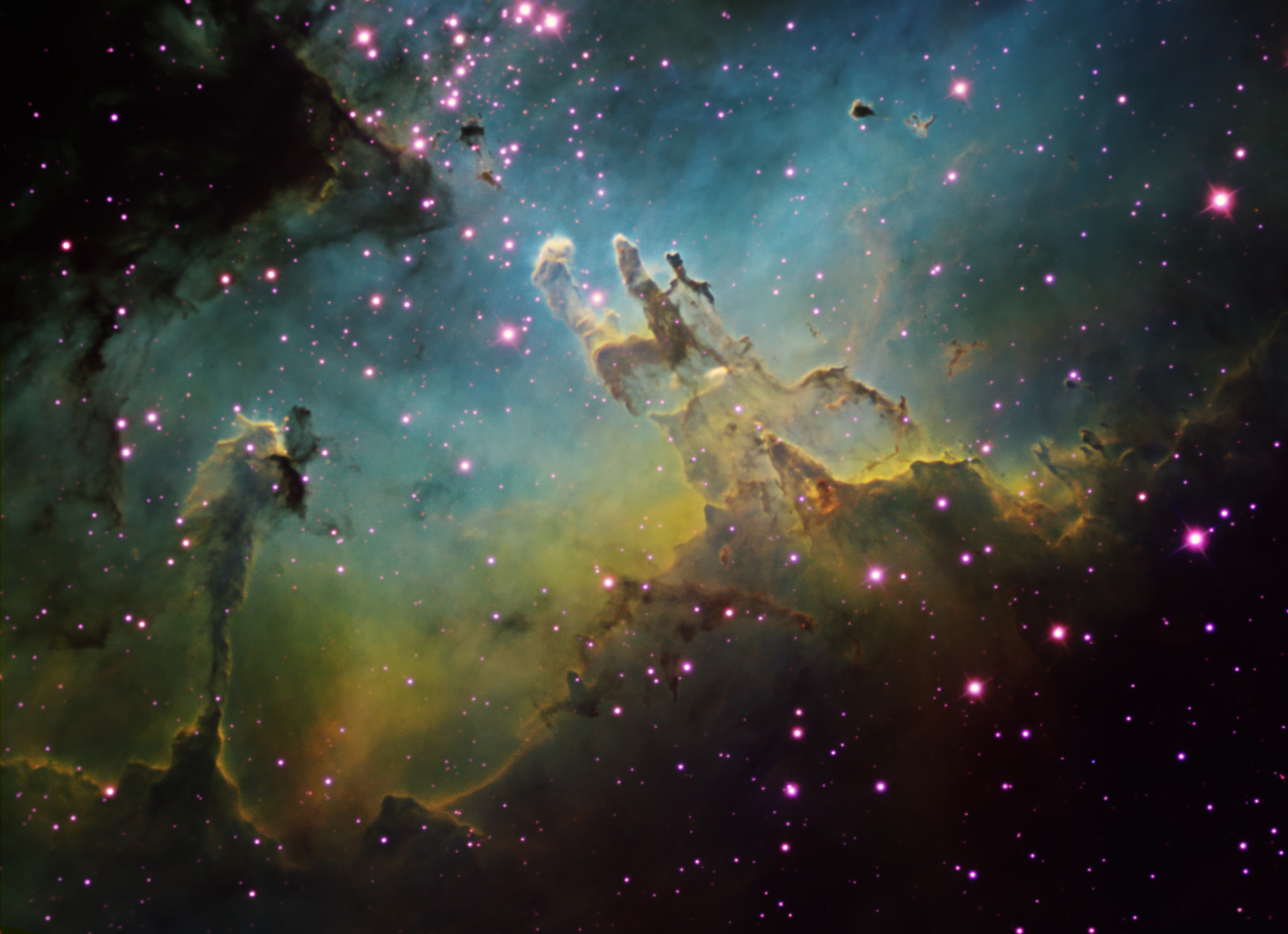

The 10,000th scientific paper using Hubble data was published.Ģ012 | Images taken by Hubble showed seven primitive galaxies from a distant population that formed more than 13 billion years ago. Hubble also photographed a never-before-seen evidence of a collision between two asteroids.Ģ011 | Hubble made its millionth observation, a spectroscopic analysis of the exoplanet HAT-P-7b. In the same year Hubble found organic molecules on an extrasolar planet and the telescope’s 100 000th orbit around Earth was celebrated.Ģ010 | Hubble images revealed distant galaxies with likely redshifts (a measure of distance used in cosmology) greater than 8, showing the Universe as it was when it was less than a tenth of its current age. Hubble also assisted the production of a 3D-map showing the distribution of dark matter in the Universe.Ģ008 | Hubble took a picture of the exoplanet Formalhaut b, the first visual image of an exoplanet. 'Pillars of Creation' credit: NASA, Jeff Hester, and Paul Scowen (Arizona State University)Ģ001 | Hubble measured the elements in the atmosphere of the exoplanet HD 209458b.Ģ004 | The Hubble Ultra Deep Field was released allowing astronomers to look even further back in the time of the cosmos.Ģ005 | Hubble photographed two previously unknown moons orbiting Pluto.Ģ007 | Hubble observations showed that the dwarf planet Eris was bigger than Pluto. Hubble also provided conclusive evidence for the existence of Supermassive Black Holes in the centres of galaxies by observing the galaxy M87.ġ995 | Hubble took the famous photo of the Eagle Nebula which was later named 'pillars of creation'. The first servicing mission to Hubble had astronauts on the Endeavour space shuttle fix a flaw in Hubble’s mirror, bringing its optics to the stunning level of detail we see today.ġ994 | Hubble witnessed a rare cometary impact, taking snapshots of a huge plume of debris left behind Comet Shoemaker-Levy 9 after it collided with Jupiter. Discovered that nearly every major galaxy is anchored by a black hole at the centre.ġ990 | The Hubble Space Telescope is launched, after almost twenty years of planning.ġ993 | When Hubble was first launched, a mistake with its mirror caused a large blurring effect that severely hampered its ability to complete ground breaking astronomy.Helped determine the rate at which the universe is expanding.


This means telescopes like Hubble act like time machines, enabling us to study the history of our Universe. Even with relatively local objects the delay can be impressive, with our nearest neighbouring galaxy, the Andromeda galaxy, being viewed as it was almost 2.5 million years ago. This is because light takes time to travel the long distances from the objects it came from. When Hubble shows us images in space, the view it gives us is always of how objects looked some time in the past.

Thanks to this and the lack of the turbulent air currents that make stars look like they are twinkling, Hubble is able to take some of the sharpest and deepest images of our Universe. In fact, ultraviolet astronomy is all but impossible to complete from the ground due to the presence of gases like ozone that block ultraviolet light in the upper atmosphere. Hubble's success is in no small part due to its position high above the atmosphere, removing many effects that hamper ground-based observers. Since its mission began in 1990, Hubble has made more than 1.3 million observations. Hubble has peered back into the very distant past, to locations more than 13.4 billion light years from Earth.ģ. Hubble travels at a speed of 17,500 mph and has covered a distance equivalent to a trip to Neptune, the furthermost planet in our solar system.Ģ. However, it consistently outperforms many of the most advanced ground-based telescopes and is still considered the pinnacle of optical and ultraviolet astronomy, with demand for its use in research greatly exceeding the available observing time each year. Compared to the vast 8-10m telescopes built on the ground, with even larger ones planned in the future, the 2.4m Hubble mirror is relatively average for modern day research telescopes, and with optics that are approaching their third decade of use. The Hubble Space Telescope remains one of the best telescopes in the world despite its age and only modest size.


 0 kommentar(er)
0 kommentar(er)
